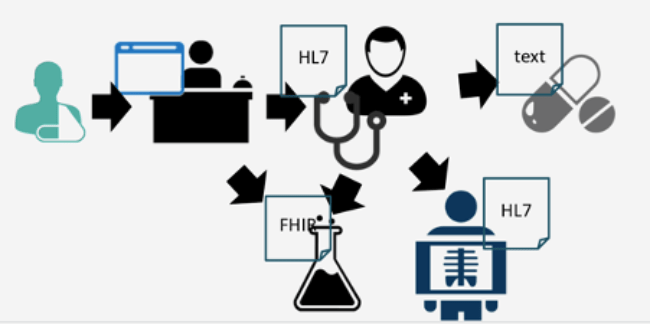Medical Data HL7 Integration
HL7 interface engine is an interface or integration engine built specifically for the healthcare industry. It connects legacy systems by using a standard messaging protocol. Because hospitals and other healthcare providers usually have different systems for different aspects of services, they are often unable to communicate with each other. HL7 gets around that problem by providing the framework for the exchange, integration, sharing and retrieval of electronic health information.
HL7 provides a framework for the exchange, integration, sharing, and retrieval of electronic health information. The system standards support clinical practice and the management, delivery, and evaluation of health services, are the most commonly used definition. HL7 standards are not Open Standards since the current HL7 Policy requires that an implementer is an organizational member of HL7, which requires annual payment of a fee.
Hospitals and other healthcare provider organizations typically have many different computer systems used for everything from billing records to patient tracking. All of these systems should communicate with each other when they receive new information but not all do so. HL7 specifies the number of flexible standards, guidelines, and methodologies by which various healthcare systems can communicate with each other. Such guidelines or data standards are a set of rules that allow information to be shared and processed in a consistent manner. These data standards are developed to allow healthcare organizations to easily share clinical information. Hypothetically, this ability to exchange information should help to minimize the tendency for medical care to be geographically isolated.
HL7 develops theoretical standards, documentation standards, application standards (e.g., and messaging standards. Messaging standards are particularly important because they define how information is packaged and communicated from one party to another. Such standards set the language, structure and data types required for seamless integration from one system to another. HL7 encompasses the complete life cycle of a standards specification including the development, implementation, utilization, and observance.
By using an HL7 interface engine, health providers can realize the benefits of existing legacy information systems without major reinvestment in new technologies, lowering costs and extending the life and efficiencies of current systems. There is also the opportunity to link to systems outside the healthcare provider such as providers of outsourced services like radiology.
HL7 interface engines are software which works as a go-between for different systems. They monitor different types of interfaces and communication points and perform actions according to rules defined by the organization.
HL7 INTEGRATION SERVICES
The health care industry is built with multiple applications services, multiple providers with multiple software applications that need to communicate. MVI Solutions’ expertise makes this possible by integrating into a cohesiveness system. The first step is research- learning how your organization utilizes the different software applications and how they need to interface. Then MVI project managers come up with an HL7 base integration plan to exchange data between the software. HL7 is the essential structured format for sending data from a software application. Every software application in the medical field, including EMR to PACS system and Clinical Information System, Radiology Information System, Electronic Health Record, Patient Administration System, and Intensive Care Unit systems, need to communicate. This communication could be within hospital offices or via internet connectivity. MVI staff makes your integration happen. Read more about a specific case below.
IMSS required a new system for retrieving their study information. Previously done through XML files that are shared, MVI built a custom HL7 listening application. Created using Visual Studio, the application would listen at a specific port for a message. Once the message was received, the system would translate the data and store it in an MS SQL database. The system would also provide an ACK (acknowledgment) back to the sending application to let it know that we successfully received and processed their message.

